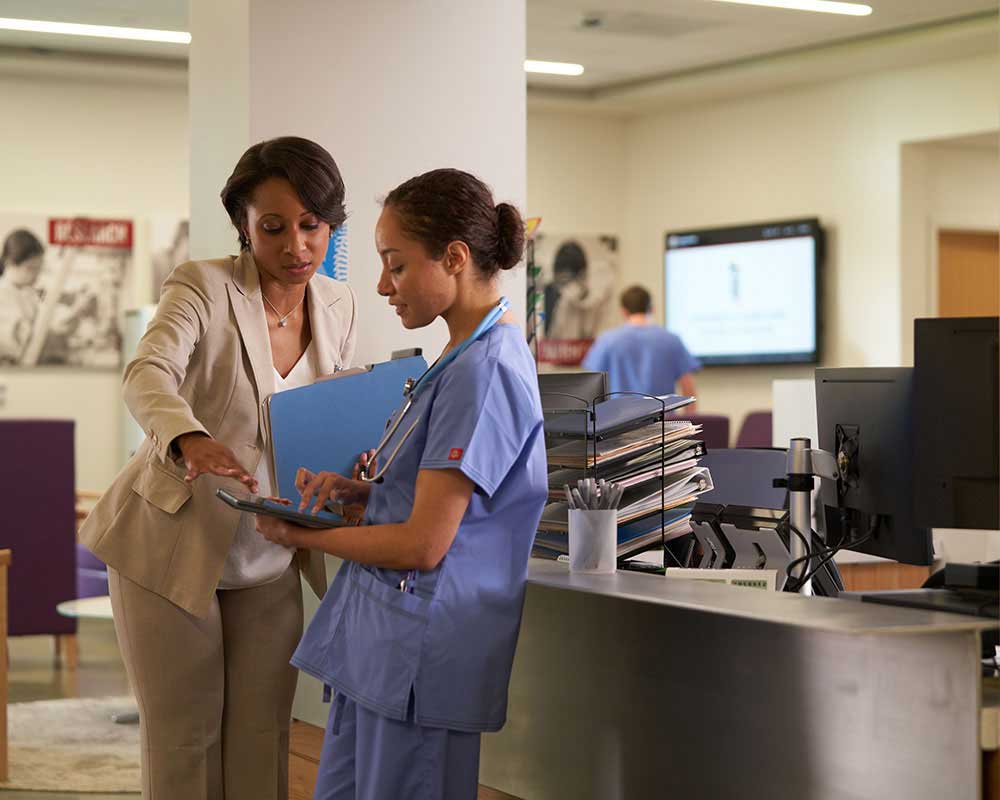How to Improve Efficiency in Medical Administration with Modern Tools
How to Improve Efficiency in Medical Administration with Modern Tools
Blog Article
Best Practices in Medical Management for Improving Efficiency and Decreasing Costs
In the ever-evolving landscape of medical care, the pursuit of finest techniques in medical administration is extremely important for enhancing effectiveness and suppressing costs. By integrating sophisticated modern technologies such as digital health records and telemedicine, medical care carriers can improve procedures and boost client treatment.
Leveraging Advanced Modern Technology
The assimilation of electronic services into medical care systems has actually transformed the way centers run, enhancing processes and enhancing patient treatment. By streamlining client information, EHRs remove the requirement for cumbersome documentation and promote seamless communication among medical care providers.
Telemedicine is an additional technical improvement that has transformed patient interaction. It supplies comfort for both clients and health care professionals by making it possible for remote appointments, which can decrease the demand for in-person sees and enhance appointment scheduling. Additionally, telehealth platforms can expand medical care accessibility to country or underserved locations, connecting spaces in care distribution.
Moreover, using Expert system (AI) and maker learning is ending up being increasingly widespread in anticipating analytics, allowing for very early detection of possible health and wellness issues and more enlightened decision-making. These innovations, when integrated effectively, can enhance analysis accuracy and personalize person therapy strategies, inevitably bring about enhanced medical care end results and operational effectiveness.
Optimizing Source Appropriation
By purposefully taking care of sources such as personnel, tools, and finances, medical care centers can significantly boost their operational efficiency, enhance individual end results, and lower unneeded expenditures. The very first step in optimizing resource appropriation includes performing a comprehensive evaluation of present possessions and identifying locations where sources may be underutilized or overextended.
Focusing on resource allotment based upon person requirements and service needs is necessary. This includes aligning sources with high-demand areas, such as emergency treatment or specialized treatments, to ensure prompt and efficient patient treatment. Executing adaptable staffing designs can also maximize labor resources by adjusting workers allotment in feedback to changing patient volumes. Furthermore, embracing telemedicine and various other technological solutions can ease physical resource restrictions by offering alternate methods for patient-provider interactions.
Financial resources must be diligently checked and designated with tactical insight to support both temporary operational demands and long-lasting institutional goals. This includes investing in training programs that boost staff expertises and embracing energy-efficient techniques that decrease functional expenses (medical administration). Ultimately, a maximized source allowance approach fosters a lasting health care environment that is responsive, efficient, and financially prudent
Streamlining Workflow Processes
When medical care centers goal to boost functional performance, simplifying operations procedures comes to be a crucial emphasis. Reliable process lessen redundancy, get rid of unnecessary steps, and enhance sychronisation among healthcare professionals. This strategy not just increases solution shipment however likewise improves the quality of client care.

Next, look here technology assimilation plays a considerable function in enhancing workflows. Applying digital health documents (EHRs) and blog here computerized doctor order access (CPOE) systems decreases documents, minimizes human error, and makes certain information comes to all relevant employees. Additionally, leveraging telemedicine platforms can streamline client consultations and follow-ups, lowering the strain on physical facilities.

Inevitably, streamlined operations lead to cost decreases and improved person complete satisfaction, cultivating a more lasting healthcare setting.
Enhancing Data Administration
Structure upon streamlined process, maximizing information administration becomes an important component ahead of time medical care management. Effective data management systems are essential for maintaining exact individual records, improving decision-making, and ensuring conformity with regulative standards. By applying durable data monitoring remedies, health care facilities can boost the high quality of patient treatment while all at once lowering functional costs.
One trick element of improving information administration is the integration of innovative electronic health document (EHR) systems. These systems facilitate the smooth exchange of individual information across various divisions, minimizing duplication of examinations and reducing mistakes. A well-designed EHR system supports information analytics, allowing doctor to identify patterns and make informed choices concerning patient treatment.
In addition, safeguarding individual information is critical. Taking on comprehensive cybersecurity procedures, consisting of file encryption and normal audits, ensures the stability and confidentiality of sensitive info. This not just protects individuals yet also preserves the establishment's reputation.
Buying team training is an additional critical element. Informing medical care professionals on data administration techniques enhances their ability to successfully make use of innovation, causing boosted patient results. To conclude, boosting data administration via advanced technology and extensive training is essential for accomplishing performance and price reduction in medical administration.
Fostering Collaborative Interaction
An important component ahead of time clinical management is promoting collective interaction amongst healthcare specialists. Effective interaction is critical for guaranteeing seamless patient care, enhancing treatment results, and decreasing errors. By urging open discussion and sychronisation across multidisciplinary groups, health care organizations can boost their operational performance and minimize unneeded costs.
Central to this strategy is the assimilation of interaction modern technologies such as electronic health documents (EHRs) and safe and secure messaging systems, which help with the rapid exchange of crucial person info. These tools make it possible for health care carriers to read this post here gain access to and share data in actual time, making sure that all employee are notified and lined up in their decision-making procedures. Normal group meetings and interdisciplinary rounds can better advertise a culture of partnership and accountability.
Educating programs concentrated on improving communication abilities are additionally vital. These programs can assist team create the capacity to communicate details plainly and listen actively, therefore decreasing misunderstandings and fostering an encouraging work environment. In addition, embracing standardized interaction methods, such as SBAR (Circumstance, Background, Analysis, Suggestion), can enhance the exchange of information, making sure that critical information are conveyed succinctly and successfully. Ultimately, promoting collaborative interaction causes enhanced health care distribution and cost financial savings (medical administration).

Conclusion
Incorporating sophisticated modern technology, such as digital health records and telemedicine, together with enhanced resource allowance and structured operations procedures, is vital for enhancing effectiveness in clinical management. Reliable data administration and promoting collective interaction among healthcare teams are crucial for minimizing redundancies and improving care high quality. By focusing on preventative treatment and taking part in quality improvement initiatives, healthcare organizations can achieve significant expense financial savings and improved client end results, therefore guaranteeing lasting medical care shipment in a progressively complicated atmosphere.
Report this page